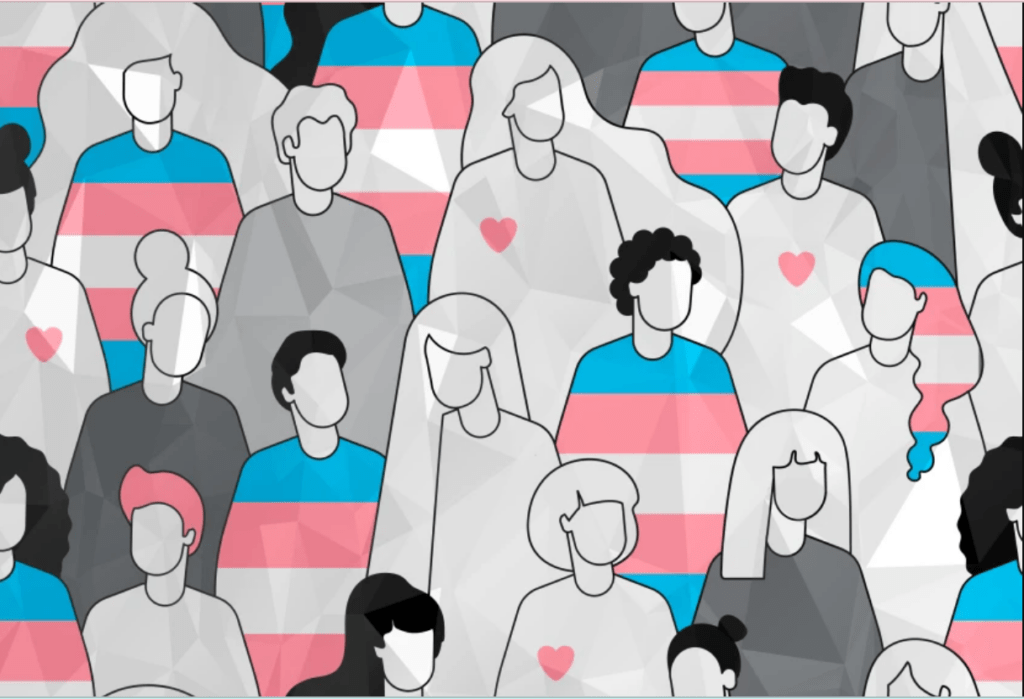If you have been on the internet regularly for the past few years, you may inevitably have come across a very contentious debate doing the rounds: transwomen in women’s sports. Everyone seems to have an opinion on it, yet the debate has not evolved in the primary points it posits since its initiation. This is because the arguments of the proponents of trans exclusion in sports are not based on any empirical evidence, but rather on certain prejudiced notions of fairness disguised as fact, as a certain commitment to “biological reality“.
Of course, this debate is more mainstream in the West than in India, where transgender persons still have to fight for recognition and visibility. In Western nations, transgender people are hyper-visible and are required to live in the blinding, invasive, and often disapproving light of social institutions and policymakers. Both extremes posit their challenges. In India, the Transgender Person (Protection of Rights) Act, 2019, despite its failings, offers at least constitutional validity to part of the community, owing to the Indian subcontinent’s cultural familiarity with the concept of gender fluidity.
To claim that India is completely removed from the global anti-transgender rhetoric, in terms of both influence and participation, would be extremely fallacious.
In the West, particularly in the United States and the United Kingdom, there has been a rise in anti-transgender discourse and legislation that denies transgender and non-binary identities legitimacy. This is not to say, however, that anti-discrimination laws in India adequately refract into jurisdiction or practice, or that other constitutional provisions are not exceedingly cis-normative.
Indeed, to claim that India is completely removed from the global anti-transgender rhetoric, in terms of both influence and participation, would be extremely fallacious. Therefore the fact that this issue is not more widely discussed in India enables national institutions to implement the same codes as those of international sports organisations without addressing any of the requisite considerations.
The big T
Usually, the matter of transgender women in sports is brought up in discussions about the need for more accessible gender-affirming healthcare. Indeed, some naysayers go so far as to claim that the entire reason AMAB (Assigned Male At Birth) people seek to transition is for the undue advantage it would give them over cis women in sports.

Undergoing gender-affirmation surgery and treatment is an extremely taxing process, physically and mentally. It would be an extreme measure to go through that, and, even if one concedes for a second that it may be a motivation, it is not as general as these individuals claim, and certainly not a reason to deny an entire community much-required healthcare.
There also seems to be a certain notion that if trans women are allowed to compete in women’s sports, they will win out over cis women and dominate women’s tournaments. There is no substance to that argument. In no country, trans rights activists would argue, that a trans woman, by entering women’s tournaments, won out over all the other participants. This would fall flat however when that does happen, and the inclusion of trans women in sports should not rely upon the condition that they should not claim accolades or positions supposedly meant for cis women.
Anti-trans arguments hinge on seemingly indisputable biological facts and claim that exposure to testosterone throughout puberty gives one an edge over others, despite being, as some countries require a trans person in sports to be, on a year of testosterone suppression treatment. The relation between testosterone levels and athletic performance is dubious, and the unwavering consensus that testosterone somehow gives one an upper hand may be rooted in patriarchy and misogyny.
Besides, the idea that typically “high,” testosterone levels are a feature of the male anatomy only and that somehow results in better athletic competence, does not fare well when one considers the fact that there are cis women who also, due to PCOS (Polycystic Ovarian Syndrome) and other conditions, have higher testosterone levels than the average, and it would be a gross miscarriage of justice to prohibit such women from participating in the same categories due to that.

Additionally, research shows that testosterone as a biomarker of differences between the two conventionally acknowledged genders may not be as reliable as one would assume. In a group of male athletes with varying testosterone levels, the athletes with higher testosterone levels did not as a rule outperform others, which goes to show that any judgment of physical prowess based on the quantity of testosterone in one’s body is necessarily a reduction of a rather abstract unquantifiable quality, a correlation treated as causation.
Moreover, it would be erroneous to claim that the advantages supplied by testosterone in terms of height and weight assist in every sport that has different categories for men and women. Chess, for instance, has separate men’s and women’s teams in India. One therefore, cannot scientifically justify the claim of the supposed superiority of AMAB (Assigned Male At Birth) individuals over AFAB (Assigned Female At Birth) individuals with an argument that hinges solely on testosterone levels, or any biomarker for that matter, because that is an operationalisation, a measure undertaken to make categorisation easier and not a true and indisputable fact.
Ah yes, the two genders
To understand operationalisation and how it is problematic when it comes to the division of humanity, one must attempt to make the familiar unfamiliar. Gender is a familiar concept. It is easy to grasp because of how reductive it is. It is easy to subscribe to given that this particular social construct is sustained the world over in some form or the other. What we know as fact therefore has a lot to do with what we can most easily digest.

Gender is treated as an empirical and static characteristic of an individual because a lot of methodological disciplines benefit from there being a strict binary. As discussed earlier, this kind of simplification is often deceptive. It is undertaken to make abstract concepts easier to understand and address but it can also reduce them and in its attempt to make them objective, eliminate all nuance. The operationalisation of most human potential, aspirations, needs, and talents has historically been based on what kind of genitalia one has, and, like most other simplistic generalisations, is prone to oversight.
This strict gender divide and the resultant distinction between men’s and women’s sports also begs the question: What about gender-fluid and intersex individuals? Are they banned from participating in sports because they do not anatomically or socially conform to either of these categories? And if they are not, which category or identity is imposed upon them?
It will not do however to dismiss all good-faith concerns that stem from a lack of understanding as malice. Some have suggested a separate category for trans athletes to compete in. An Outlook article, problematically lauding the World Athletics ban of transgender women from the women’s category as a “bold,” move, undertaken in the era of “political correctness,” quotes veteran athlete PT Usha as saying:
“There should be a separate category for DSD [Differences in Sexual Development] athletes, apart from men and women divisions. Because their numbers seem to be increasing and it is a problem for real women to compete against them.“
Even if one ignores the implications of using the phrase “real women,” in the phrasing of this assertion, one must concede that it informs this statement’s intention. Introducing a separate category for trans athletes, in principle, goes against the primary maxim of gender-sensitive movements: Trans women are women. Trans men are men. Trans people are people. It may not be a very empathetic course of action to put trans women in separate categories then, because that connotes that they are removed from the general female population.
It is also interesting to note that the hue and cry about transgender individuals participating in sports does not translate into a concern for transgender men in men’s sports. If it is fairness that the objectors are preoccupied with and that is what prevents them from supporting the cause of gender sensitivity, then they must also be equally interested in trans men in men’s sports. If they truly believe that testosterone exposure over the years results in athletic advantages, then they must also believe that it is unfair that trans men have to compete with cis men. The fact that transgender men in sports are treated in stark contrast to transgender women exposes the hypocrisy lying behind this claim of fairness.
The finish line
There are no easy answers to these questions, no readily available resolutions that will satisfy everyone. Gender is a highly convoluted subject that evades all claims of rationality and science, and if biology claims to understand gender, what it understands is its reconstruction of it, or rather, its reduction of it. Until it has answers that we can reliably bank upon, the best and only thing to do is to listen to transgender people about matters concerning them, to step away from the rabid discourse online, undertaken mostly by cisgender people, and ask trans athletes for their inputs because it is tragically ironic how unilateral this debate is when it comes to policymaking.

Even if one is not bothered by the exclusion of transgender or genderqueer persons from a field as mainstream as sports, there is ample cause for discontent with the prevailing antiquated paradigm of sports competitions, and it strongly needs revision.
Transgender women in sports merit rightful inclusion and recognition, and they certainly do not deserve to be used as a strawman argument by individuals who are sceptical about the transgender community and are indifferent to women’s sports beyond this particular concern. In the end, one must be mindful of the fact that this is more than an internet discourse, and certainly more than an arena for one to declare their predispositions. There will be answers, but first, there must be acceptance.
About the author(s)
Adrita Bhattacharya is a Computer Science graduate from Vellore Institute of Technology and is currently pursuing a degree in English and Cultural Studies at Christ University. She has a keen interest in Linguistics, Gender Studies, and Digital Humanities.






